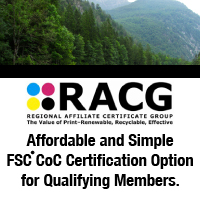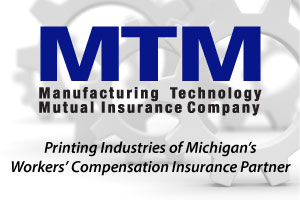A Top-Down Approach
By Charles Groce, CEO of Pearl Street Consulting

First, let’s define CRM. CRM stands for Customer Relationship Management and is a software system which allows your company to effectively organize all sorts of data, including customer data, lead data, sales activity, and more. Think of your CRM as your information repository of all data related to your customers and potential customers. It is like an online library of all important communications with your customers and potential customers.
Some time after a successful deployment and adoption of a CRM at your organization, any member of your staff will be able to use the system to review the history of your company’s interaction with any customer, from the initial winning of the customer, to looking at job activity and performance, to the systematic and proactive review of production or fulfillment problems which arose in the past with each customer.
Print is certainly not alone with regards to the challenges of successful CRM adoption. In a 2013 study by the marketing agency Merkle Group Inc, interviews of 352 senior-level executives at companies with $1+ billion in revenue revealed that an astounding two-thirds (63%) saw CRM deployment at their companies as a failure.
The reasons cited by the report may sound familiar to companies in print who’ve had difficulties with CRM. They include a lack of clear ownership of customer insight data (training and information workflow, 53%), lopsided adoption by department management (43%), a lack of executive buy-in (38%), and CRM not being a priority with company IT (38%).
Does this mean that CRM deployment is a waste of time and resources? Not at all! The same study showed that high growth organizations, those companies with both revenue growth and profit growth, were 50% more likely than low-growth organizations to view CRM as key to their company’s success. So CRM is important to the bottom line, and this begs the question: How can organizations in print deploy a CRM successfully?
In this article, I want to briefly list some of the factors that I’ve seen in the successful adoption of CRM solutions in the printing industry as well as some of the barriers to adoption.
Successful adoption requires, absolutely must include executive and managerial buy-in. Owners must insist that their managers require their staff to utilize the CRM in their day-to-day reporting activities. This means, of course, that staff must be trained on the daily usage of the system and must be continually reminded of its value.
A customer has a problem? It shouldn’t be put down on a paper form which goes in a dark desk drawer where it dies a slow, biodegradeable death. This information goes in the CRM where it will be reviewed later as part of a CRM-driven job follow-up process. A potential customer has called in and asked for more information? This touch point goes in the CRM where all such activity can be analyzed later. A special postal form is required for a customer mailing on their own periodical permit: all pertinent information goes in the CRM, not on some sticky note attached to a CSR’s computer monitor.
 The CRM as the central repository of your customer interaction data becomes the most critical system in your organization allowing your company to be systematic in its interactions with customers. Managers must insist that members of their team stop utilizing their own way of organizing this data, even if this approach has worked for years, but utilize a CRM to make customer-specific information systematically organized and widely available to the team.
The CRM as the central repository of your customer interaction data becomes the most critical system in your organization allowing your company to be systematic in its interactions with customers. Managers must insist that members of their team stop utilizing their own way of organizing this data, even if this approach has worked for years, but utilize a CRM to make customer-specific information systematically organized and widely available to the team.
This is admittedly easier said that done. Managers can demand all they want that staff use the CRM system, but if the staff sees it merely as a reporting tool, it’s less likely to be adopted enthusiastically. This is why it’s critical that organizations integrate the CRM with their main MIS (Management Information) system. The CRM should also be the most convenient place where your sales and customer service staff retrieves quotes, invoices, and other customer specific data.
But isn’t this the purpose of your MIS? It’s part of it, but MIS systems often don’t provide the flexibility of a modern CRM, with their automated email capabilities, task assignment, mobile integration, and powerful built-in visualization tools. Print specific MIS systems are great at what they’re designed to do, operate your printing business, but not great at what they’re not designed to do. CRM functions are often, at best, an after thought in the design of print-specific MIS systems.
Finally, in choosing a CRM for your company, we argue that successful deployment and adoption is not so much about choosing the right system as it is about successfully preparing your staff for the cultural change that comes from putting a CRM front and center in your operation.
CRM adoption ain’t easy, but it can be done with a well thought out approach that isn’t simply driven by the technical requirements. Successful CRM adoption requires a one-two punch of adoption from the top down.
PIM members should contact the PIM office for more information 248.946.5895.
About the Author: Charles Groce is the CEO of Pearl Street Consulting, a Michigan-based IT, web, and software consultancy. Charles is also the owner/operator osforprint.com, an open source technology solutions provider for the printing industry.







